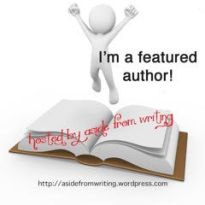
David Attenborough and a Bear
Being a fantasy author, one of the cornerstones of my world building is the unique fauna that I put within Windemere. Not only the dragons and griffins that have been in the genre for years, but creatures that I’ve made on my own. This isn’t easy to do since so much has come before me. Many times, I find it simpler to go through mythology for creatures or nothing more than inspiration. Yet, there is another tool that I highly recommend to authors who are looking to create monsters from the ether:
NATURE VIDEOS
- The most obvious help is in giving you physical attributes that can be added to your homemade monster. Not only how they look, but how they’re used by the original animal. For example, simply putting crab claws on the body of a gibbon can be really cool in a visual sense. Yet, they won’t be able to swing because of how the claws are supposed to work. Another thing to consider is that some crabs have a big claw and a little claw. Watching a video on these animals can help an author understand the positive and negative changes.
- You can learn about the food chains and environments of our world. Take this information to design your own habitats with the new animals taking on the roles of real life counterparts. Some authors gloss over this, but I believe that you need to design real ecosystems for your creatures. This gives them another dimension instead of being threats to the heroes. Consider that they are as natural to your world as bears and squirrels are to our world. That means they need a role in the habitat.
- Going a little back to #1, there are more ‘pieces’ you can take from animals besides their physical forms. Many creatures have special abilities like venom, immunity to some natural toxins, regeneration, etc. By learning about these and how they function in the real world, you can add them to your monsters. They won’t seem out of place this way because you know more of the details. For example, you can learn about different types of venom before choosing the kind. Spider, scorpion, and snake don’t always do the same thing.
- Behavior is another subject that these videos can teach you about, especially if you have a knowledgeable narrator. Personally, I’ve used this to understand the different types of animal groups. Lion prides operate one way while wolf packs are another. Herds of herbivores end up being something else entirely. Prey tends to be more alert and can be scared away easier than predators. Some videos will show you what certain types of animals will do in the face of disasters like floods and fires. This can be used when a big event is about to happen in your story. Retreating wildlife is always a big sign that trouble is coming.
- One interesting part of some videos is when they go into the interactions between humans and animals. It’s a little tougher with monsters since they tend to have less fear towards us than mundane beasts. We write them as inherently aggressive and destructive to the point where they don’t even feel like part of the ecosystem. It can come off as them being unnatural, which can harm the world building unless you explain where they came from. Aside from monsters, you can learn about the history of taming animals and design new livestock. Considering these animals are int he story because they’re going to interact with the characters, it doesn’t hurt to learn about how such interactions work in the real world.
There’s always more depending on what you’re going for. The list can include breeding, eating habits, migration, hibernation, and whatever else you might need. A key point is to treat your monsters like they are part of the environment. Give them reasons to exist beyond threatening adventurers and getting killed. Books are different than video games here where random encounters don’t really do much for either party. Besides, it’s a lot of fun to learn about animals and use that knowledge for fiction.





Some great advice on creating a monster with animalistic traits, Charles.
LikeLike
Thanks. 🙂
LikeLiked by 1 person
Fun and useful post. I’m toying with some of this in my project right now.
LikeLike
Glad you have a use for it. 😁
LikeLiked by 1 person
Reminds me of the video of the guy holding a salmon up to the camera and behind him, a big bear is running through the stream intent on the catch.
LikeLike
I think I remember that one. I’ve see a few videos where bears just show up to steal food from fishermen.
LikeLiked by 1 person
Ha ha ha
LikeLike
Reblogged this on Chris The Story Reading Ape's Blog and commented:
Great world building/populating tips from Charles 👍😃
LikeLike
Thanks for the reblogging. 😀
LikeLiked by 1 person
My pleasure, Charles 😃
LikeLike
Great tips, Charles. I love nature videos (though the cruel side of nature is sometimes difficult to watch). I love the Planet Earth and National Geographic videos!
LikeLike
They can be fairly brutal. I tend to avoid the ones that seem to be about the cruelty more than education though.
LikeLike
Reblogged this on Die Erste Eslarner Zeitung – Aus und über Eslarn, sowie die bayerisch-tschechische Region!.
LikeLike
Thanks for the reblog.
LikeLike
Great post; fun and excellent advice. Using nature videos to add some realism to your imaginary creatures will make it much easier for the reader to accept that the creature might actually exist as a potential part of your world, and help them get in to the story.
LikeLike
That single speck of realism can go a long way. Especially when people keep questioning how fictional creatures can exist or function.
LikeLike
Absolutely!
LikeLike
Reblogged this on Author Don Massenzio and commented:
Check out this great post from Charles Yallowitz on this Legends of Windemere blog on a useful tool for monster creation — nature videos.
LikeLike
Thanks for the reblog.
LikeLiked by 1 person
You’re welcome.
LikeLike
Reblogged this on Anna Dobritt — Author.
LikeLike
Thanks. 😁
LikeLike
A fun post and some great tips!
LikeLike
Thanks. 🙂
LikeLiked by 1 person
I think the lack of world-building must explain why so many “monsters” are vicious and attack the characters on sight. Obviously the author didn’t consider giving them any prey animals in the world-building, and they’re starving!
LikeLike
From talking to other authors, I think part of that stems from seeing the characters/humans as prey. As you said, they don’t create prey animals for the monsters, so they put people in its place.
LikeLiked by 1 person
That is an amazing photo.
LikeLike
Thanks. 🙂
LikeLike